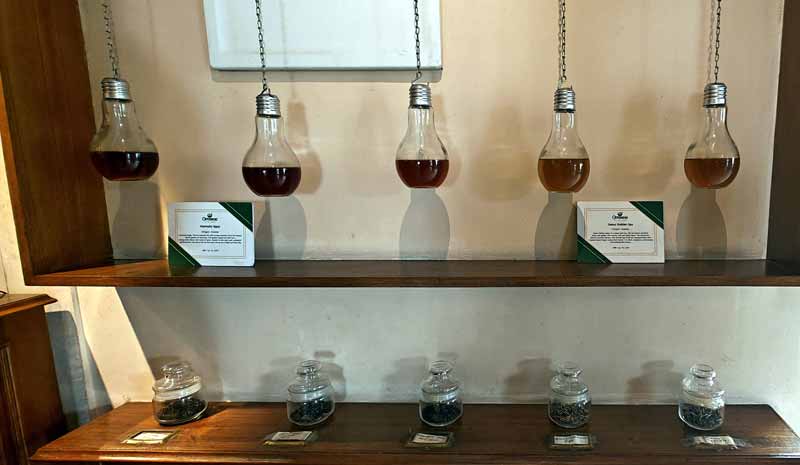THE CUP THAT CHEERS
Tea is a drink that is probably the one that most people in the world wake up to and Darjeeling produces some of the finest orthodox teas.
A recent trip to Darjeeling, brought me up close to the beverage of choice and understanding its nuances helped me appreciate what goes into making the drink loved across the world.
Camellia Sinensis, the botanical name of tea, is the most consumed beverage in the world after water. Interestingly, the history of tea dates to over 5000 years and is believed to have been discovered by accident. It is said that in 2737 BC, Chinese emperor Shen Nung was sitting under a tree. His help was boiling drinking water and a gust of wind led a few leaves to fall into the boiling water. Seeing the colour of the water change, he decided to try it as he was also a renowned herbalist. And this infusion is what was tea – a chance discovery that soon became the most popular beverage in the world.
And with this background, I was really looking forward to experiencing tea plucking and educating myself about all kinds of tea and a guided experiential event at Sterling Darjeeling ensured just that. The property has a few tea bushes that allow you to touch and feel the shrub and you can even opt to dress like the tea pickers complete with a wicker basket fastened from your forehead to pick the tea leaves. Interestingly, the tea plant is used to make different kinds of tea. Usually, the pickers pluck two leaves and one bud every morning. The various kinds of tea include green tea, black tea, Oolong tea, silver tips imperial, and silver needle tea. I am told that handpicked tea is the best way to make black tea.
Tea was introduced to India during British rule in the 1850s with the first ones being planted in Assam and then spread to Darjeeling, Nilgiris and other places in the country. The tea in Assam is largely CTC or cut tear curl but Darjeeling only produces orthodox tea which is pure loose leaf tea. Based on the season the teas are graded as first flush, second flush, autumn flush and monsoon flush. Autumn flush is the last of the season and Dec-Feb is the off season. The tea shrubs are pruned this time and the bushes grow to the same height. March to April harvest is first flush where the leaves give a light tea while the second flush is a stronger version of the tea.
Among the pricier variants of tea is the silver needle tea which is just the bud that looks like a silver needle with a white hue. This also gives it its more popular name – White tea. Being processed minimally it is just sun dried and sorted which makes it the healthiest tea being full of antioxidants. This tea seems like water with a slight yellow tinge. The silver tips imperial is another premium tea that is plucked on full moon nights from 6:00 pm and is processed before sunrise. One of the oldest tea companies, Makaibari in Darjeeling is known for its silver tips imperial tea which is exported worldwide and is the tea that is consumed at London’s Buckingham Palace.
The way the tea leaves are processed also leads to different variations of the same. Usually once the tea leaves are plucked, they go through a weathering process when the tea leaves are covered with a net and hot air is blown into it which removes 65 percent of its moisture. The next process is called rolling where the tea leaves are rolled using a machine. Then these rolled leaves are fermented, dried, and sorted. The sorting is also done by a machine and it separates the loose leaves and dust. This gives black tea. If there is no fermentation it will give green tea and if there is semi fermentation it will give oolong tea. The dust goes into tea bags as this is good tea but cannot be strained and hence is out into the bag. Likewise, the plucking style is also a method to distinguish the kind of tea that is made. For instance, one leaf and one bud will be used for silver tips imperial, a single bud is used to make silver needle tea. And the best way to have tea is without milk and sugar as it cuts acidity too. Ready for a cup of tea?
Reach: Bagdogra International Airport located 70 km away is the nearest airport.
Stay: Sterling Darjeeling has an interesting mix of rooms that makes for a great holiday destination. You can sign up for a tea experience at the inhouse activity center where the entire process is explained.


